Case study
Jan 23 2024
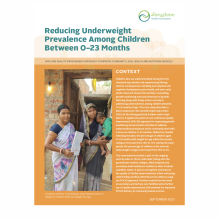
Reducing Underweight Prevalence Among Children Between 0-23 Months
This case study describes a pilot conducted in the Amethi Health Sub-Centre of the Wazirganj block in Bihar state’s Gaya district. It applies the point of care continuous quality improvement approach for improving growth monitoring and promotion activities to address undernutrition prevalence at the community level with a focus on children 0–23 months.
Case study
Jan 22 2024
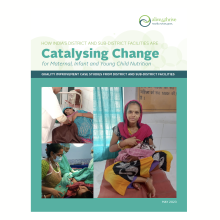
How India's District and Sub-District Facilities Are Catalysing Change for Maternal, Infant and Young Child Nutrition: Quality Improvement Case Studies from District and Sub-District Facilities
Alive & Thrive collaborated with government medical colleges and affiliated hospitals in Uttar Pradesh and Bihar to undertake a point of care quality-focused approach for strengthening maternal, infant, and young child nutrition service delivery and cascaded the interventions to district and sub-district hospitals with support from medical colleges.
Poster/Graphic
Dec 10 2020
Brief, Handout
Oct 28 2020
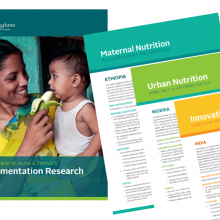
An overview of Alive & Thrive's implementation research
Alive & Thrive's implementation research spans its program areas, seeking to answer "how" to implement effective interventions and policies. Active studies are detailed in the attached documents.
Handout
Apr 21 2020
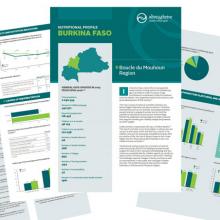
Burkina Faso Nutrition Profiles for Six Regions
These nutrition profiles present MIYCN data for six regions of Burkina Faso, including data on health and nutrition indicators, causes of undernutrition, nutrition promotion platforms and antenatal and child health care, and global nutrition targets.
Brief, Handout, Poster/Graphic, Report
Sep 19 2019
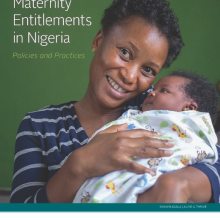
Maternity Entitlements in Nigeria: Policies and Practices
Despite globally accepted knowledge on the benefits of breastfeeding and the contribution of maternity entitlements to increasing rates of exclusive breastfeeding, there has been little research on how maternity or paternity leave is practiced in Nigeria, the labour force’s level of compliance, o


